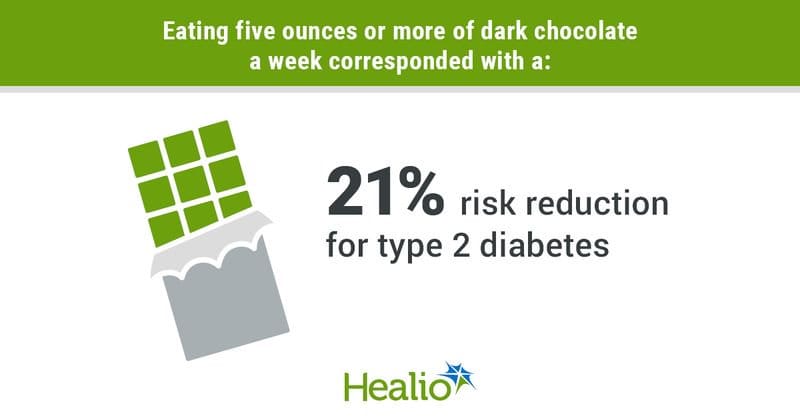Best wishes for 2025. Start the year celebrating the article below. Notice it has to be dark, not milk chocolate, so put away the M&Ms and Hershey bars.
‘Not all chocolate is created equal’: New data imply the dark variety lowers diabetes risk
Healio Minute, December 5, 2024. Data derived from: Liu B, et al. BMJ. 2024;doi:10.1136/ bmj‑2023‑078386.
“Consumption of dark chocolate could significantly lessen type 2 diabetes risk, new data from a retrospective cohort analysis published in BMJ suggests. Other types of chocolate, like milk chocolate, may not reduce the risk and instead negatively affect other risk factors for diabetes.”

“Our findings suggest that not all chocolate is created equal,” Binkai Liu, a doctoral student in the department of nutrition at Harvard T.H. Chan School of Public Health, said in a press release. “For anyone who loves chocolate, this is a reminder that making small choices, like choosing dark chocolate over milk chocolate, can make a positive difference to their health.” Prior studies have shown chocolate can have mixed health results. While eating chocolate may promote gut wellness, diets high in chocolate also increase the risk of depression and anxiety symptoms. Findings on the connections between type 2 diabetes and any chocolate or chocolate subtypes have also been inconsistent, the researchers noted. In the current study, Liu and colleagues assessed data from the Nurses’ Health Study, the Nurses’ Health Study II and the Health Professionals Follow-Up Study.”
“For up to 34 years, 192,208 adults free of diabetes, cancer or CVD at baseline reported their dietary habits — including chocolate consumption — body weight and diabetes status, while 111,654 reported the specific types of chocolate consumed. Researchers identified 18,862 incidences of type 2 diabetes during 4,829,175 person-years of follow-up during their analysis. They found that consuming 5 or more ounces of any type of chocolate a week corresponded with a 10% (95% CI, 2%-17%) reduced type 2 diabetes risk compared with rarely or never eating chocolate after adjusting for several dietary, personal and lifestyle factors.
“Additional results revealed a 34% reduction in risk (95 % CI, 12%-51%) among those with a higher vs. lower diet quality, while each serving of chocolate a week was tied to a 1% (95% CI, 0%-2%) lower risk. In the analyses of chocolate subtypes, Liu and colleagues identified 4,771 incidences of type 2 diabetes during 1,270,348 person-years of follow-up. These analyses revealed that people who ate 5 ounces or more of dark chocolate a week had a 21% (95% CI, 5%-34%) lowered risk for type 2 diabetes vs. those ate rarely or never ate chocolate.
Milk chocolate did not reduce type 2 diabetes risk but was instead tied to an average weight gain of 0.68 kg (95% CI, 0.42-0.95) in people with obesity and 0.33 kg (95% CI, 0.24-0.42) in people with a normal weight. In contrast, dark chocolate was not linked to long-term weight change in any BMI group. “We were surprised by the clear split between dark and milk chocolate’s impact on diabetes risk and long-term weight management,” Qi Sun, MD, ScD, associate professor in the departments of nutrition and epidemiology at Harvard T.H. Chan School of Public Health and study co-author, said in the release. “Even though dark and milk chocolate have similar levels of calories and saturated fat, it appears that the rich polyphenols in dark chocolate might offset the effects of saturated fat and sugar on weight gain and diabetes. It’s an intriguing difference that’s worth exploring more.”


